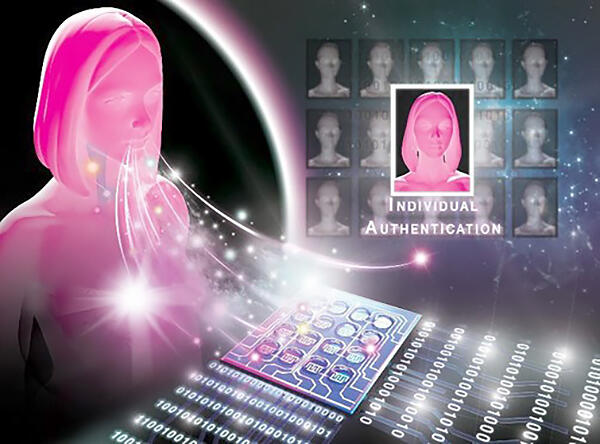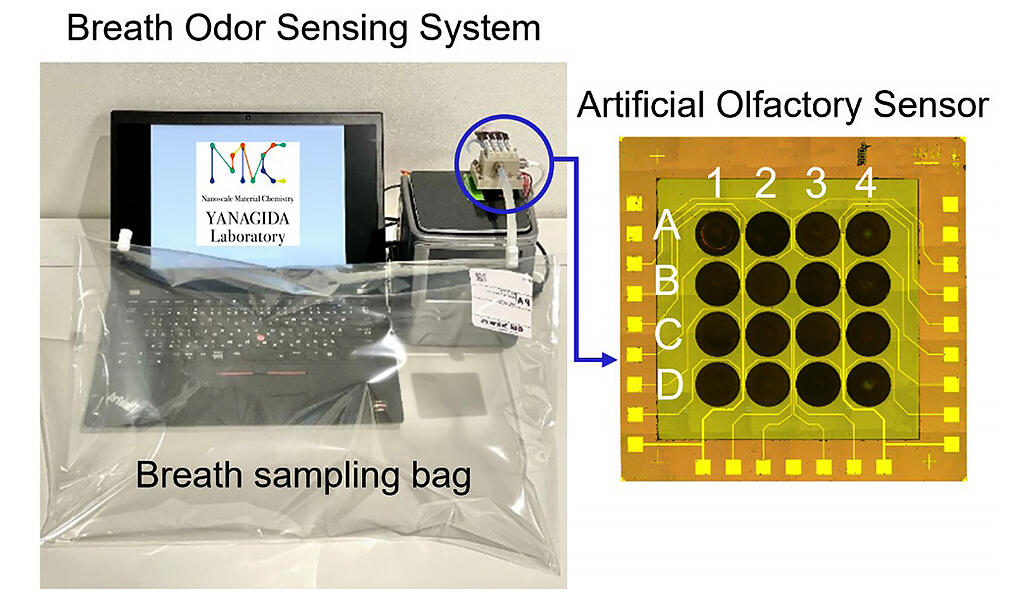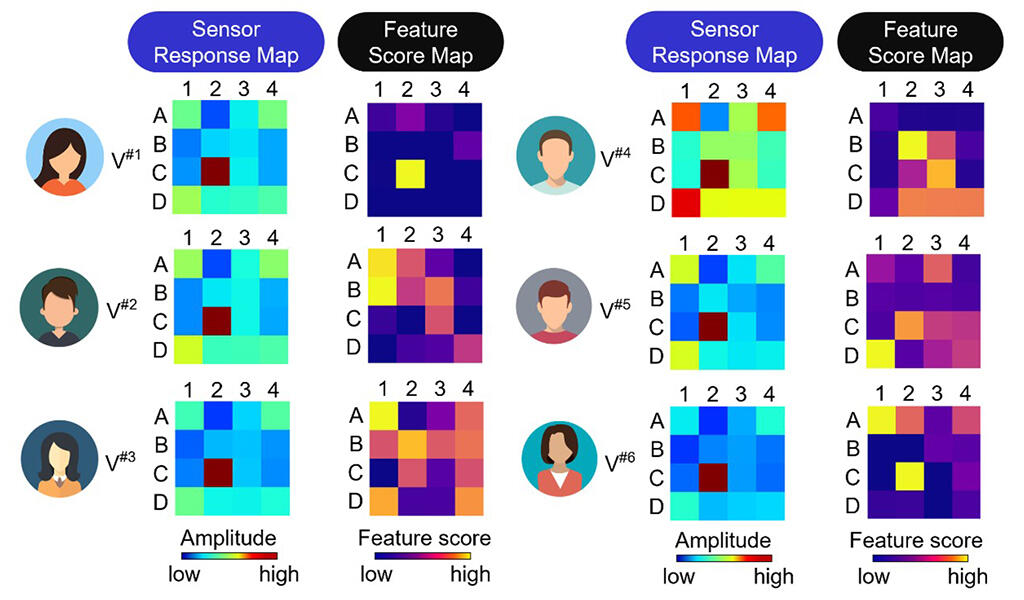Countless systems to verify personal identity, such as using PIN numbers, passwords, fingerprints, or facial recognition, have been developed to protect society, organizations, and individuals from a variety of the threats in the world, such as Internet crime and terrorism. And now a new method has been added to the arsenal, with a joint industry-academia research group, including the University of Tokyo, announcing that they have tested the principle of personal identification using breath. The principle involves the chemical analysis of molecules contained in exhalation, and unlike fingerprint and facial recognition, the technology may see use for its advantage of being extremely difficult to spoof.

(Provided by the University of Tokyo)
Gasses that disappear when used are hard to abuse
Technologies for biometric authentication developed to date include fingerprints, palm prints, facial recognition, iris scanning, retinal scanning, finger vein scanning, otoacoustic emissions (sound reflections determined by the shape of the ear canals), and voice prints. However, all of these technologies share downsides such as the reduction in accuracy when people are injured or the long-term potential for spoofing when information is forged or stolen.
However, the research group believe that these downsides can be overcome by measuring the types and ratios of molecules contained in the gasses released from the human body. And because the gas dissipates shortly after authentication, long-term spoofing by others is not possible. To begin, the research focused on gasses emitted from the skin, but the concentration of molecules, often at the level of ppt (parts per trillion) or ppb (parts per billion), was much too low for sensors to detect.
From a layman's point of view, it makes sense that exhalation, involving an ample quality of gasses compared to the tiny amounts emitted from skin would be easier to measure. So, why did the group start with skin instead? Associate Professor Kazuki Nagashima, who studies nanomaterials at the School of Engineering, the University of Tokyo, suggests, "A group in Switzerland reported the possibility that the constituents in breath are different from person to person in 2013. However, subsequent research focused on skin gasses, perhaps because it was thought that breath would be affected by food smells."
Individual identification with 97% accuracy
Given the situation, the research group led by Professor Nagashima noticed that the concentration of molecules in breath was three times that of the skin, at levels of ppb to ppm (parts per million). The group decided to test the principle believing that if they could capture breath using an artificial olfactory sensor, then they could identify individuals. Exhaled breath contains approximately 1,000 different types of molecules, and recent research has found that some of those are derived from genetic information.
When the group first investigated the constituents of breath, they found many of the same molecules that were found in skin gasses, and they were able to confirm that the pattern of the constituents varied from person to person.
Based on these findings, an artificial olfactory sensor made from polymeric materials and conductive carbon nanoparticles, consisting of 16 different elements was developed, primarily by Panasonic Industry (Kodama City, Osaka). The way the device works is that when a target molecule affixes to a sensor, the sensor materials expand, widening the gap between the conductive carbon nanoparticles. When that happens, electrical resistance increases, allowing detection of the molecule. The ease of detection depends on the characteristics of the polymer and target molecule. Accordingly, a variety of molecules can be detected by lining up sensors made with different polymers.
To test the device, the group had six subjects from different backgrounds, including age, nationality, and gender, breathe into bags on an empty stomach to avoid any influence from food. The outcome of the test was that each of the 16 different sensor elements responded differently, and the patterns of those responses differed between individuals. Different molecules affixed to each type of sensor element, and the degree of response to each type of molecule differed as well. And because the constituents of breath vary for each person, the overall patterns differed as well. Accordingly, the group obtained these patterns using machine learning, and succeeded in identifying individuals with more than 97% accuracy. While practical application of the principle is still far off, these results proved more than promising.

(Provided by the University of Tokyo)
The accuracy of the system remained over 97% even when the group of test subjects was raised to 20 people. Meanwhile, the group found that all elements were helpful in personal identification, and that they could increase the accuracy and repeatability by increasing the number of elements. They noted that while they collected between one and 10 liters of breath per individual, the system would work with less.
The research group consists of members from the University of Tokyo, Kyushu University, Nagoya University, and Panasonic Industry. The findings were published in the May 20th electronic edition of Chemical Communications, the chemistry journal of the Royal Society of Chemistry. The research was supported by the Japan Science and Technology Agency (JST) Strategic Basic Research Programs and the Japan Society for the Promotion of Science (JSPS) Grants-in-Aid for Scientific Research.

(Provided by the University of Tokyo)
Will sensor improvements lead to more secure authentication?
According to group member Professor Takeshi Yanagida, who also studies nanomaterials at the School of Engineering, the University of Tokyo, "We were able to show that it is possible to identify individuals using molecules as chemical information. This is still less accurate than using physical information such as facial recognition or fingerprinting. However, molecules are still released in the dark, and don't suffer from such problems as with fingertips when they are dirty. Each method has its advantages and disadvantages, so they are complementary."
It is important to note that this test was simply to prove the principle, and many issues remain before practical application is possible. The group notes that one particular issue is the stability of the sensor versus changes in temperature and humidity. Meanwhile, if a sensor stops working, the learned data will be rendered unusable, lowering the accuracy. An important challenge moving forward is the development of materials and devices.
The group will need to work on eliminating the effects of smells, such as food and perfume, while also testing the authentication of a larger number of people. But these issues can likely be overcome by improving sensor performance, which they expect will lead to more secure authentication.
Professor Yanagida spoke of the enticing aspects of the research, saying, "Of the volatile constituents released by the body, there are those that are always the same, and those that change depending on illness or other conditions on that day. We hope to examine this type of information in more detail using a variety of materials and devices, enabling us to obtain data that was previously unobtainable so we can increase our learning data. While of course I am interested in practical applications, I am also fascinated by the science aspect of coming to understand complexities that were previously not understood." Through this research, we find here the deeply fascinating theme of how to fully understand the human body, and through what methods.
I (the writer) sometimes wonder if there's something wrong with my face when I try to log in to the PC in the morning using facial recognition. Perhaps there will come a day when we simply have to breath on a device to use our PCs or smartphones, or to pay at shops.
KUSAKA Takeo / Science Portal Editorial Office
Original article was provided by the Science Portal and has been translated by Science Japan.




